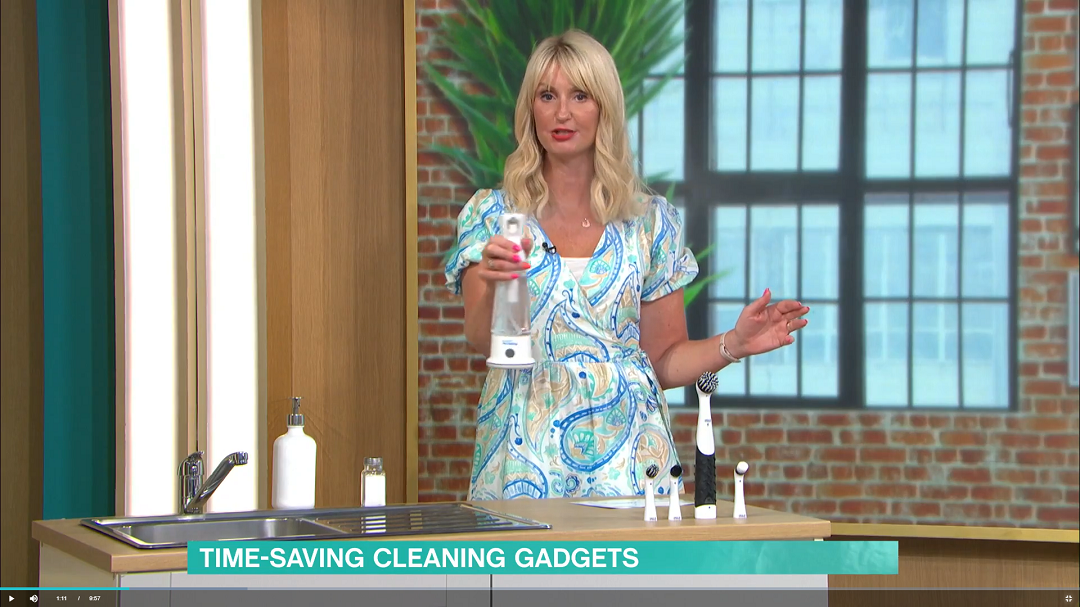5-minute explainer: how to understand log reductions
Jump to section
Subscribe to news
In the world of disinfectants, the most commonly used product claim relates to kill rates. For example: ‘This solution kills 99.9% of bacteria’. That’s only natural as the most important feature of a disinfectant is obviously how well it kills pathogens. But, it’s not quite as simple as that.
This blog explains the link between log reductions and kill rates, as well as speed of kill and regrowth rates.
Log reductions and kill rates
The log reduction is a mathematical term used to express the relative number of living microbes eliminated by a disinfectant.
In scientific papers a 1 log10 reduction – this is more commonly written as 1-log – corresponds to inactivating 90% of a target microbe with the count being reduced by a factor of 10. A 5-log reduction means inactivating 99.999% of a microbe or colony forming units (which is a measure of viable bacterial or fungal numbers or counts, also known as CFUs).
This is calculated using a logarithmic scale, which stands for a 10-fold (or one decimal place) reduction in CFUs. It’s equivalent to a 90% reduction in bacteria at each step.
It also calculates the number of microbes left behind once disinfection has taken place. For example, from a small colony of a million viruses on a restaurant table, a 1-log or 90% kill rate will leave 100,000 microbes behind. This table shows the various connotations:
| Log rate | 1-log | 2-log | 3-log | 4-log | 5-log | 6-log |
| % kill rate | 90% | 99% | 99.9% | 99.99% | 99.999% | 99.9999% |
| Microbes left from 1m | 100,000 | 10,000 | 1,000 | 100 | 10 | 1 |
Figure 1. Log, percentage and remaining bacteria from a small colony of 1m microbes.
Let’s look at this another way. The difference between 4-log and 3-log is that 4-log is 10 times more effective and leaves behind 10 times less microbes than 3-log. The difference between 5-log and 3-log is that 5-log is 100 times more effective. The difference between 5-log and 1-log is 10,000 times more effective. This shows just how quickly the logarithmic scale ramps up.
Dwell times and speed of kill
If we delve deeper into the performance of a disinfectant than we need to also take into account dwell times. This is the length of time a solution needs to be in contact with a surface for it to have the claimed kill rate shown on the front of the bottle – in other words, it’s the speed of kill.
So, when you spray a tabletop with a solution it’s how long the solution needs to be left before wiping off. And this may surprise you.
To achieve the performance claim of a disinfectant, for example 99%, a solution often needs to be left for 30-seconds, a minute, five or maybe even longer for this to be achieved. Let’s think about what this means in a restaurant setting.
Once a table sitting has finished and the clear up takes place ahead of the next customer, the employee has to remove all dirty plates, cutlery and glasses. Before the table can be re-laid, it then needs to be cleaned with a sanitiser. This is normally done in real time with a spray and wipe so there’s a quick turnaround and service can resume – just think about fast food chains where the restaurant’s performance is so heavily based on the turnaround of its customers.
Unfortunately, this doesn’t take into account the dwell time of a sanitiser to achieve the claimed log reduction. So, in reality the solution would need to be left a minute, five minutes or longer, and that’s likely to be shown on the back of the bottle or in the solution’s technical reports.
But, what does this mean in practice?
If a solution has a combination of, say, a 99% kill rate and needs a five-minute dwell time to achieve this, then that’s certainly not ideal. This means to be effective in a cleaning regime, the cleaner would have to spray a surface, wait for five minutes, and then still have 10,000 virus cells out of the one million left viable.
Regrowth rates
A third factor we need to take into account are the regrowth rates of microbes once the solution has been applied, wiped and left as clean. This refers to how quickly the pathogens grow back on the surface and is normally measured over a longer period of hours.
It’s affected by different factors, including environmental ones such as the temperature and moisture on a surface. But those in our control relate directly to how much of the microbe colony has been killed in the first place – so the higher the kill, the longer it will take to grow back to the original small colony of one million we mention above.
It can also be affected by whether any disinfectant solution is left to remain on a surface. In the case of most synthetic sanitisers they are recommended to be used in a two-step approach of wash on and wash off. So, the disinfectant is left on a surface to kill the microbes then washed off so none of the chemical remains.
Using bioluminescence to test kill kinetics
The below video includes a scientific experiment at 05:15 mins carried out by Professor Darren Reynolds (BSc, PhD), who is the Professor of Health and Environment in the Department of Applied Sciences at UWE Bristol.
In the experiment, Reynolds is using bioluminescence to test the kill kinetics (how quickly the solution kills) and the regrowth rate of electrochemical activated solutions (ECA or Toucan Eco) on bacteria.
Professor Reynolds explains: “By applying bioluminescent DNA to bacteria, when alive it kicks out light, which we can detect. When the light goes out the bacteria is dead, and this helps us to visualise how long it takes these bacteria to be killed – and the kill is very fast.”
In terms of regrowth, Professor Reynolds explains: “Regrowth is also incredibly important and what we can do with bioluminescence is keep the low-light cameras rolling and come back the next day to see if the bacteria have grown back.
“Many disinfectants do not have the residual quality or kill enough bacteria in the initial application and this results in regrowth. When using ECAs that regrowth is virtually nil – sustainable long-term hygiene that we’re after.”
Contact time, efficacy and regrowth combined
Kill kinetics demonstrates how the Toucan Eco solution combines the important properties of rapid contact time, efficacy (or high log reduction) and a low regrowth rate to make a really effective disinfectant.
Average disinfectants may deliver one or two out of these three factors, but it’s all three that are ideally needed for you to have a biocide that’s easy to use, quick to apply and highly effective.
What’s more, the solution made by Toucan Eco at 100ppm FAC (that’s free available chlorine) has been laboratory proven to kill the norovirus and poliovirus – which are both harder to kill than Covid-19 – with log rates of 5-log (or 99.999%) and 6-log (99.9999%) respectively, quickly and with low regrowth rates.
This means that for 99.999% reduction from the earlier example of one million CFUs, then 10 viable cells remain, and for 99.9999% reduction, 1 virus cell remains. This proves Toucan Eco is a very effective biocide against microorganisms such as the coronavirus.
For more information, please watch the Professor Reynolds interviews talking about the science behind electrochemical activated solutions.




